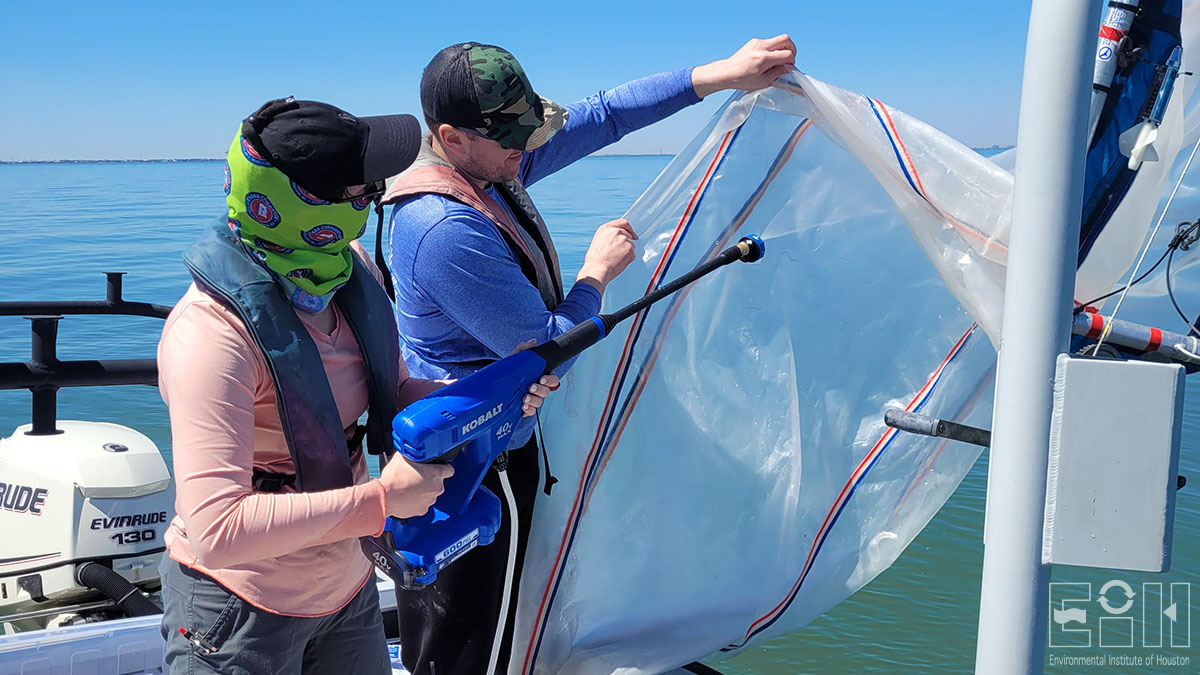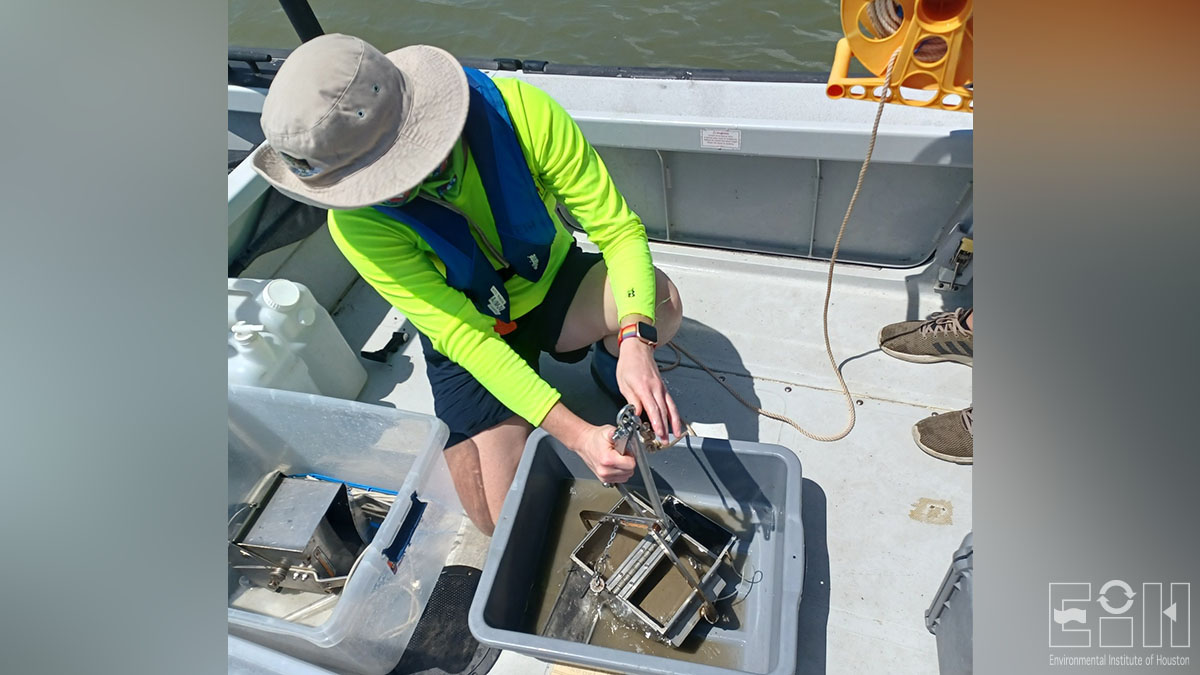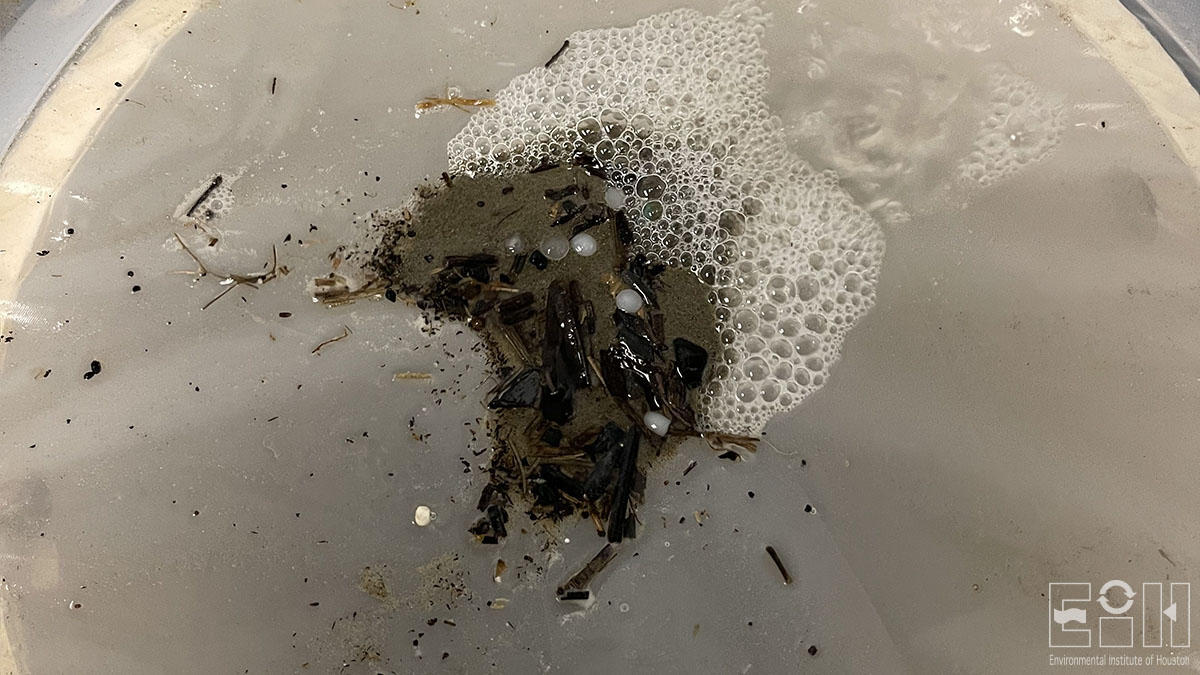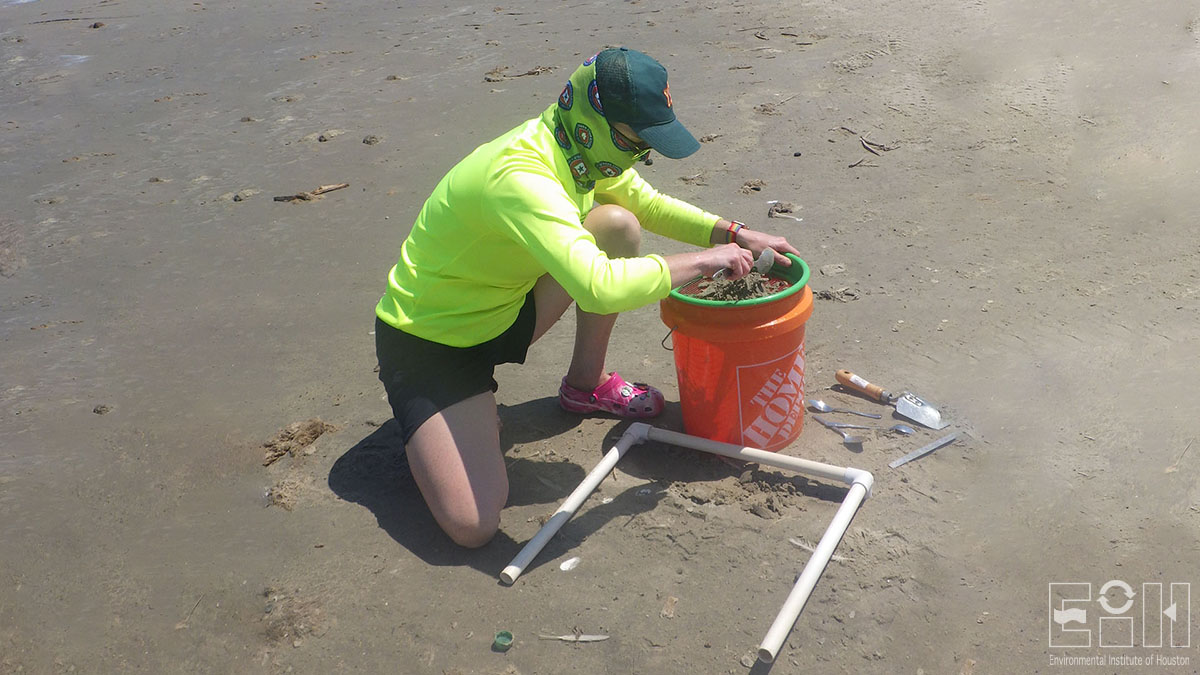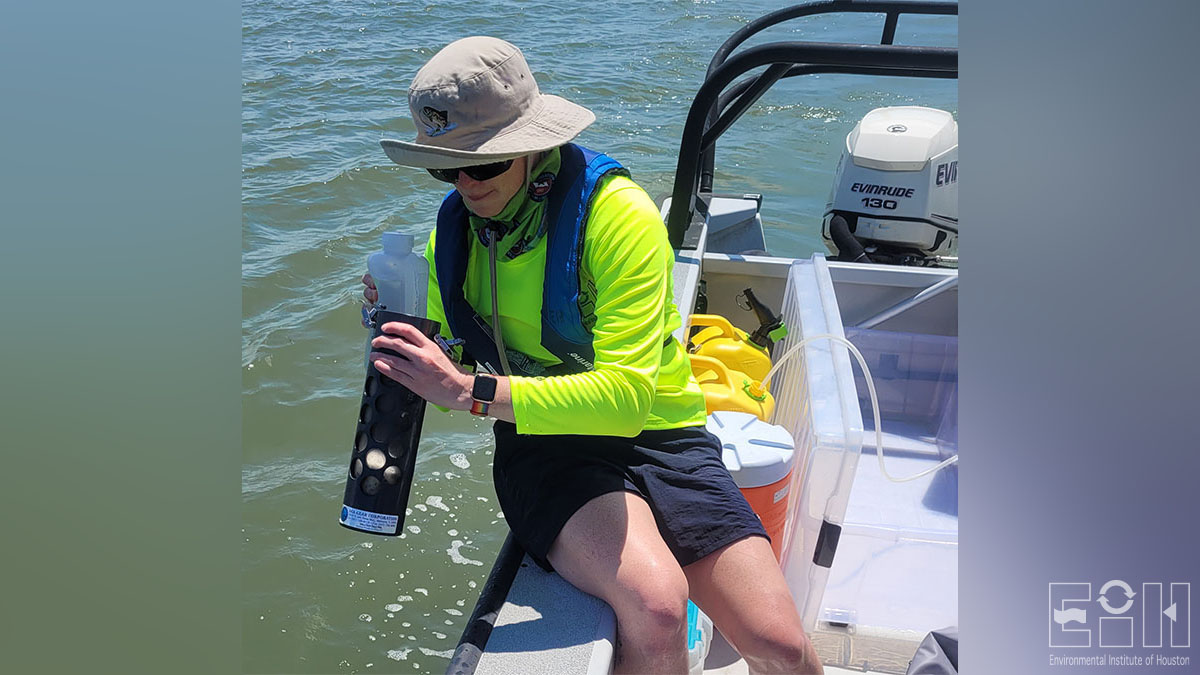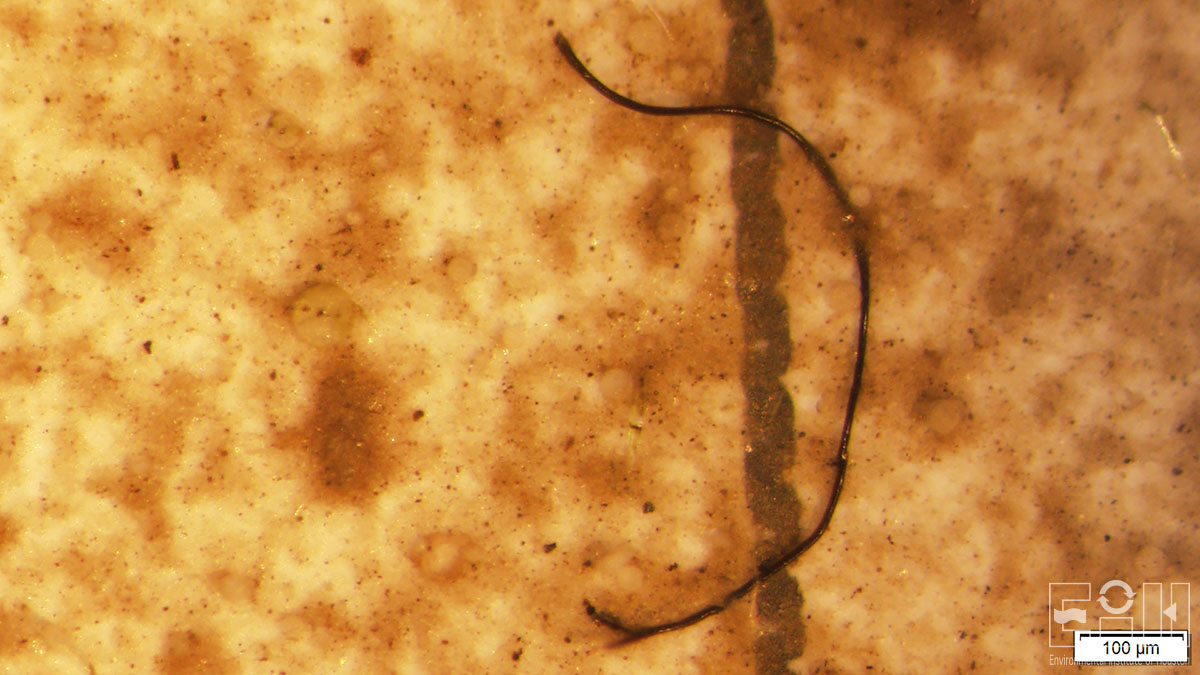
Microplastics in the Galveston Bay Watershed: The Big Impacts of Tiny Pollution
Purpose/Objectives
Marine debris is predominantly comprised of plastic and poses many human health and ecotoxicological risks. Plastic debris never fully degrades but becomes continuously fragmented creating secondary microplastics, defined as fragments less than five millimeters in diameter. Primary microplastics also occur in the environment in the form of nurdles, small plastic pellets used as raw manufacturing material for other plastic products. Microplastics are ubiquitous across environmental media, especially in heavily urbanized estuarine ecosystems such as Galveston Bay, home to the largest petrochemical refinery complex in the country. The distribution of microplastics in Galveston Bay is not fully understood, and this information is necessary to characterize the microplastic pollution that exists in the area and inform best management practices. Therefore, the primary objective of this project was to estimate the density and occurrence of microplastics in surface waters and sediments of Galveston Bay.
Additionally, the primary objectives of partners at Turtle Island Restoration Network (TIRN) were to 1) to encourage public environmental stewardship and provide resources to reduce plastic pollution in the Galveston Bay watershed, 2) to provide students with classroom lessons to understand watershed science and the impacts of microplastics on the Galveston Bay ecosystem, and 3) field applications of classroom lessons by collecting and analyzing water samples for microplastics.
Study Area
Upper and Lower Galveston Bay and Trinity Bay, Texas
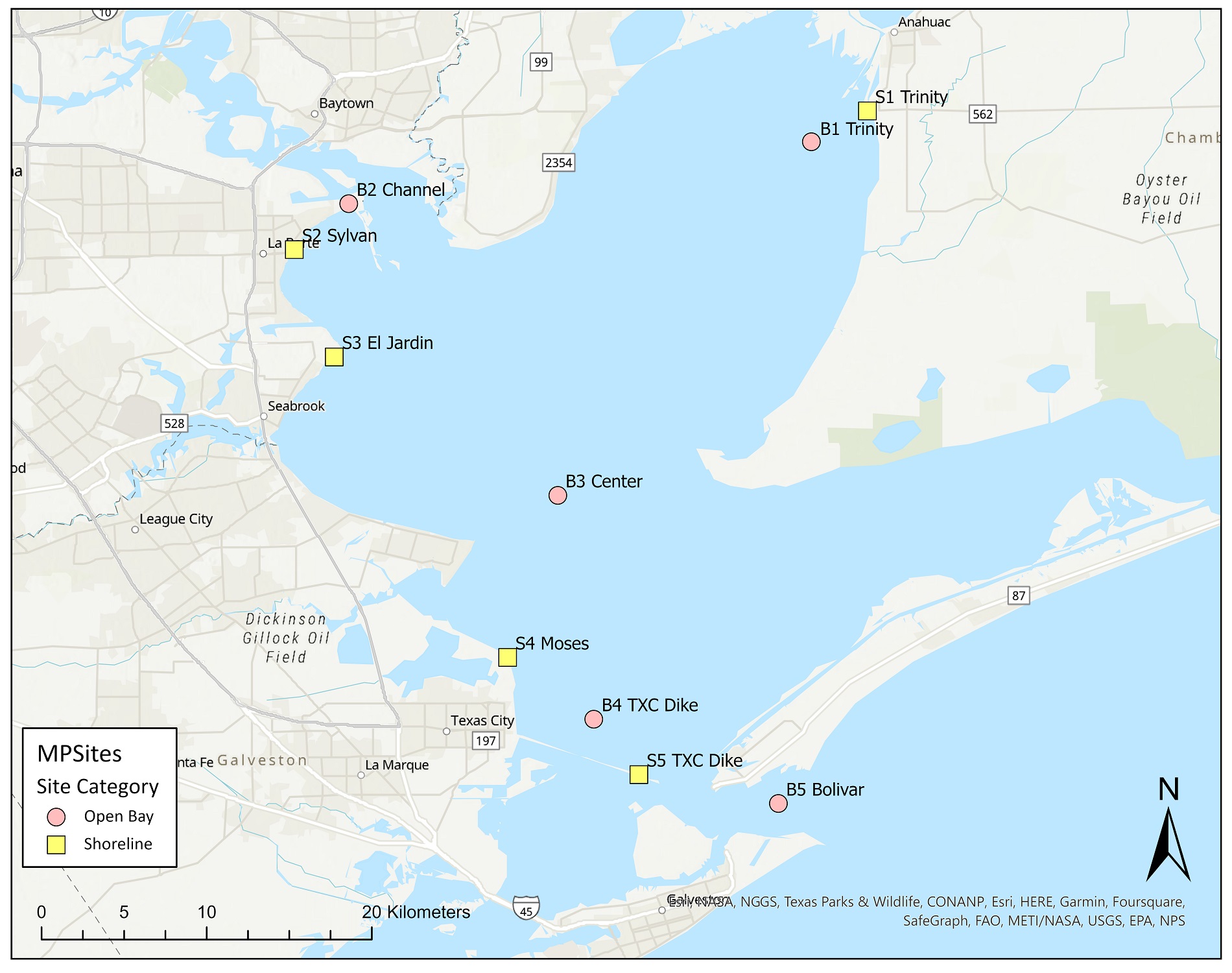
Project Period
2021 – 2024
Description
Replicate surface water and sediment samples were collected at each of five shoreline and five open bay sites over a spring and a summer collection period. Samples were processed in the lab to separate microplastics from media, and retain microplastics on a filter or petri dish for later examination. The microplastics were then enumerated using a dissecting microscope. This information serves as a baseline for the microplastic loads in surface waters and sediments of Galveston Bay.
Publications and Presentations
Oakley, J.W., Guillen, G., Steinhaus, J., Cox, E., Sager, M., and Huette, M. 2024. Microplastics in the Galveston Bay watershed: the big impacts of tiny pollution. Final report. Prepared for the Galveston Bay Estuary Program, Contract 582-21-10096. EIH Report 24-002, 57 pp.
Cox, E., Oakley, J.W., and Guillen, G. 2023. Estimating abundance of microplastics in surface waters of the Galveston Bay watershed. Texas Plastics Pollution Symposium, Houston, TX. Presentation; 3rd place.
Cox, E., Steinhaus, J., Anderson, K.D., and Guillen, G. 2022. Estimating abundance of microplastics in surface waters and sediments of the Galveston Bay watershed. Texas Plastic Pollution Symposium, Port Arkansas, TX. Poster.
Cox, E., Steinhaus, J., Anderson, K.D., and Guillen, G. 2022. Estimating abundance of microplastics in surface waters and sediments of the Galveston Bay watershed. Texas Academy of Science, 125th Annual Meeting, Houston, TX. Presentation.
Project Sponsors
Related links
Turtle Island Restoration Network
Florida Microplastic Awareness Project Volunteer Manual
Mississippi State Extension Microplastics Sampling and Processing Guidebook







